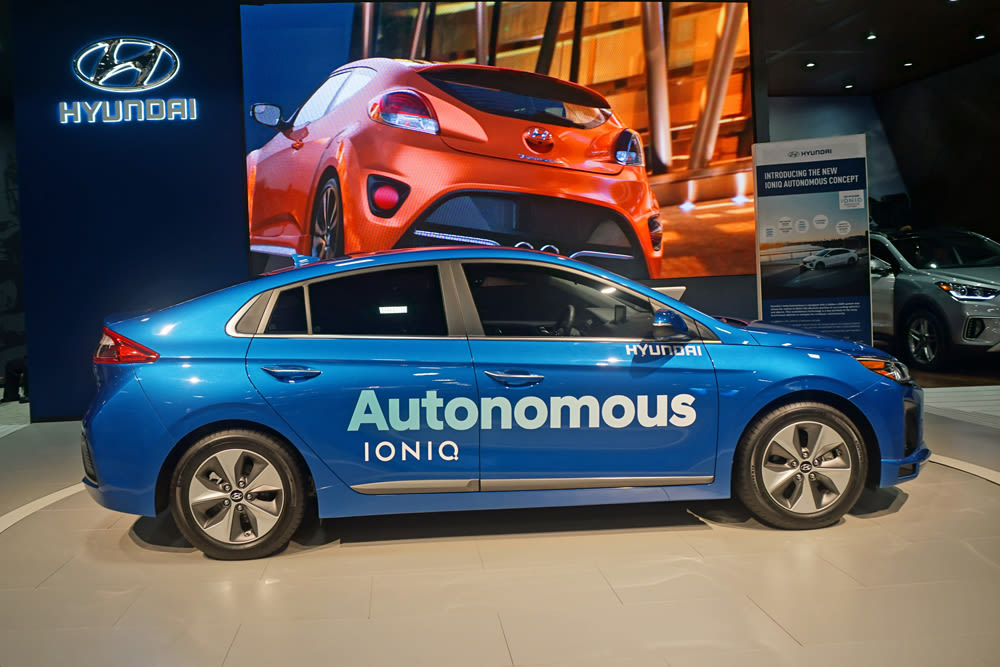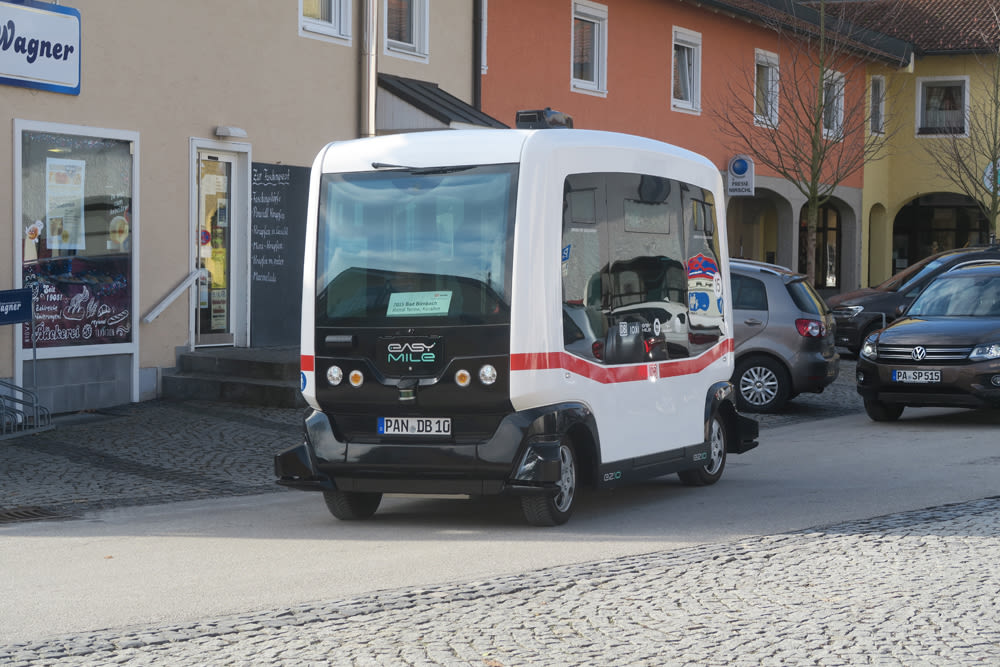Will Robot Cars Rule Portland's Streets?

The Hyundai Ioniq. (No word on possible future models Ironiq and Iconiq.)
Image: Courtesy Wikimedia Commons
If you haven’t noticed, heads up: a battle for the streets is underway. The coming revolution in transportation could trigger a full-scale war between self-driving cars, e-commerce delivery robots, buses, bicyclists, and SUV-clinger-ons. Or it might lead to a heavenly utopia where the air is clean, everybody is safe, and we all have more time to read, play games, or even have sex while 5G networks guide our vehicles from place to place.
Those were the broadest-brush pictures painted at Urbanism Next, a two-day conference in early March convened by the University of Oregon’s School of Design to ponder the impacts of autonomous vehicles, e-commerce, and the sharing economy on cities. Leading thinkers on transportation, city planning, development, and retail projected their speculations, dark and bright. All warned, get ready: like it or not, new technologies are poised to drastically change the urban world. Fifty companies have registered to test autonomous vehicles (let’s get on with calling them “AVs”) in California. This year, the company Waymo will be the first to unleash a fully driverless car. The test market: Phoenix.
As auto-independent millenials and their kids expand the sharing economy and car-makers go electric and driverless, the reigning prediction is that AVs will fill the streets. But a big theme of the conference was that this coming horde should be thought of not as a traffic jam, but as people trying to get somewhere. The big question: how do we move them faster?

An arguably cute German AV.
Image: Courtesy Wikimedia Commons
Architect Gerry Tierney offered a sunny view from LA, where Lyft commissioned his firm, Perkins + Will, to study the vehicular capacity of Wilshire Boulevard. With a fully autonomous system of rapid buses, smaller jitneys, and tiny single-occupancy AVs, the now-often-jammed 10-lane street could soar from moving 29,000 people per hour to 77,000, complete with dedicated bike lanes, wider sidewalks, and more greenery.
But the roster also featured more pragmatic views, plus some doomsayers. Congressman Earl Blumenauer warned of a collapse in gas taxes, parking revenues, and even traffic citations (presuming AVs don’t speed) that bankroll local governments. Susan Shaheen, director of mobility research at UC Berkeley (and one very few people of color at the conference), warned of an even wider, deeper digital crevasse swallowing poor people who own neither smart phones nor credit cards. Robin Chase, co-founder of Zipcar, proposed a new system of “user fees” based on vehicle miles traveled, car size, congestion pricing, curb access, and flow rate (the distance possible between vehicles—AVs allowing that space to be narrower).
Transportation planning guru Jeffrey Tumlin envisioned the darkest dystopia: AV “slaves” running errands for the wealthy, endlessly in motion to avoid parking charges along streets that have been walled from sidewalks for “safety.”
“Who is the largest investor in the autonomous space?” he asked. “Google,” he emphatically answered. He invited us to ponder a future where your pizza craving is digitally linked to restaurants that produce better ad revenues for the search goliath (or to a Tinder match algorithmically simmering at the bar).
Here in Portland, there’s good news. The city already dipped into the new revenue till with the 50-cent-per-ride tax on ride sharing services. It's developing a Smart Autonomous Vehicle Initiative that, among other features, includes a draft fee schedule for any company looking to test AVs, plus rigorous safety vetting beginning with runs at Portland Raceway. Seattle and LA, meantime, are already at work at comprehensively weaving AVs into their transportation systems.
As Urbanism Next’s varying visions overlapped in more likely middle ground (bring on the autonomous jitneys, says I!), a number of the experts zeroed in on the thin, gray line where revolution’s earliest skirmishes are already being fought: the curb. Stand on any busy street during a rush. Watch Lyft and Uber drivers jam up traffic and bike lanes as they search for their riders and as, maybe, an Amazon delivery or two takes place. (Bike lanes, ha!) Keep in mind, one analyst pointed out, that 20 percent of urban congestion is already caused by “temporal events” of parallel and double parking. Uber drivers’ average wait for passengers is 7 minutes.
Now expand the battlefield to street and sidewalks, and grow the warring troops with e-bikes, e-scooters, e-skateboards, and e-one-wheels, buses, trucks, and, yes, even few recalcitrants power-weaving through it all in internal-combustive SUVs. Oh, and don’t forget that nearly every building and power pole will gain the homely jewelry of high-frequency 5G network gear to make sure all that autonomy is in full communication. The best news might be: fewer dried-up bioswales.
It’s gonna be a brave, new world. Now is when we decide who shapes it.




